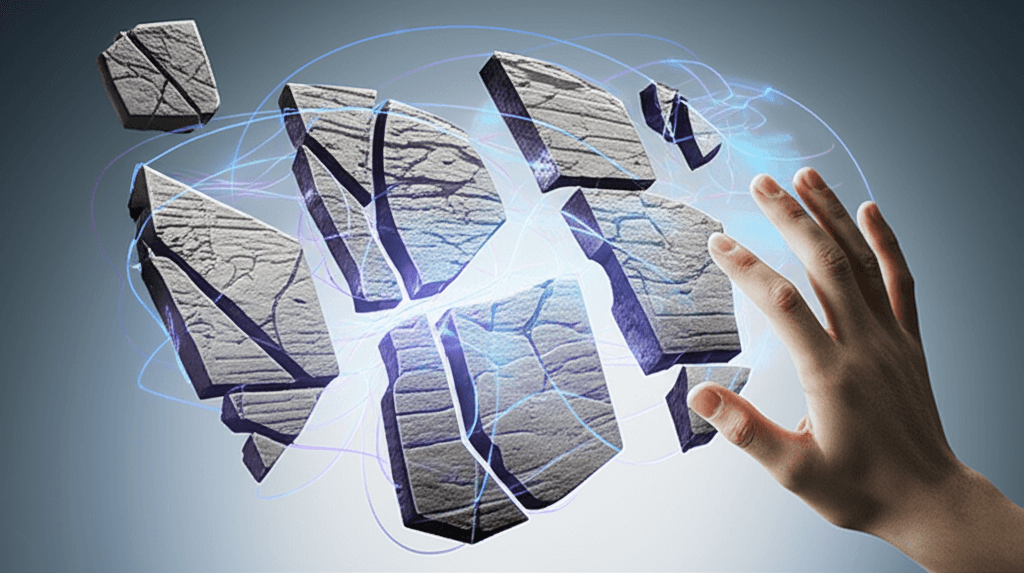DeepMind AI Aeneas rapidly restores ancient Latin, unlocks Roman history.
Google DeepMind's Aeneas AI transforms epigraphy by rapidly restoring and contextualizing ancient Latin texts, unlocking hidden secrets of the Roman world.
July 24, 2025

A new artificial intelligence model developed by Google DeepMind is poised to transform the field of epigraphy, the study of ancient inscriptions. The model, named Aeneas, is designed to help historians restore, date, and, for the first time, contextualize fragmented Latin texts, significantly accelerating a traditionally painstaking process. Announced in the journal Nature, Aeneas represents a significant step forward in the application of AI to the humanities, building on previous work and introducing novel capabilities that promise to deepen our understanding of the ancient Roman world.[1][2][3] The project, a collaboration with researchers from the University of Nottingham, the University of Warwick, Oxford, and the Athens University of Economics and Business, underscores a growing trend of interdisciplinary partnerships between technology firms and academic institutions.[4][5]
At its core, Aeneas addresses a fundamental challenge for historians: the fragmentary nature of surviving ancient texts. Inscriptions etched onto stone, metal, and other durable materials are invaluable sources, offering direct insight into the daily life, politics, and culture of ancient Rome.[1] However, these artifacts are often weathered, damaged, or incomplete, making their interpretation a complex puzzle.[6][7] Traditionally, historians rely on their expertise to find "parallels"—other known texts with similar wording, formulas, or origins—to fill in the gaps. This manual process can be incredibly time-consuming and often limits scholars to their specific areas of expertise.[1][8] Aeneas automates and accelerates this crucial step, reasoning across a vast dataset of inscriptions to identify relevant parallels in seconds, allowing researchers to focus on interpretation and analysis.[9]
To power the model, researchers curated the Latin Epigraphic Dataset (LED), a comprehensive collection of over 176,000 Latin inscriptions sourced from major academic databases like the Epigraphic Database Roma (EDR) and the Epigraphic Database Heidelberg (EDH).[1][4] This massive, machine-readable dataset allows Aeneas to identify deep connections and patterns that might elude human researchers.[4] The model's performance is notable, achieving 72% accuracy in attributing an inscription to one of 62 Roman provinces and dating texts to within 13 years of the ranges provided by historians.[1][3] In restoration tasks, it demonstrates a 73% top-20 accuracy for filling gaps of up to ten characters, and even when the length of the missing section is unknown—a significant challenge—it maintains a 58% accuracy rate.[1][3]
What sets Aeneas apart from previous tools is its advanced, multimodal approach and its focus on contextualization.[10][2] It is the first model of its kind to process both textual and visual information, analyzing images of an inscription to help determine its geographical origin.[1][9] This capability is crucial, as the physical characteristics of an inscription can offer important clues.[9] Furthermore, Aeneas moves beyond simple text restoration. Named after the mythological hero who connected the old world of Troy with the new world of Rome, the AI helps situate isolated fragments within their broader historical context, turning each inscription into a "historical fingerprint."[1][10] This allows for richer conclusions about the ancient world. The system is an evolution of a previous DeepMind project called Ithaca, which focused on ancient Greek texts.[3][11] Aeneas incorporates the functionalities of Ithaca and expands upon them, and Ithaca itself has now been upgraded to be powered by the more advanced Aeneas model.[1][10]
The implications of Aeneas for the field of history and the broader AI industry are profound. For historians, it acts as a collaborative tool, designed to integrate into and enhance existing research workflows rather than replace human expertise.[9][10] In a study involving epigraphers, Aeneas's suggestions were found to be a valuable starting point for inquiry 75% of the time, and participants reported a 23% average increase in confidence when using its findings.[9] The tool significantly speeds up research, with one historian noting that a task that would have taken days was completed in just 15 minutes.[9] For the AI industry, Aeneas showcases the potential of generative AI to serve as a powerful aid in specialized academic fields, moving beyond general language tasks to tackle complex, domain-specific problems. By making the tool, its code, and its dataset open-source and freely available, Google DeepMind aims to foster further research and collaboration.[10][2]
In conclusion, Aeneas stands as a powerful example of human-AI collaboration, bridging the gap between computational power and historical scholarship. By shouldering the laborious task of sifting through vast amounts of data, it frees up historians to do what they do best: interpret, analyze, and construct narratives about the past.[9][12] While experts note the need for long-term evaluation to determine its full impact, the tool has been hailed as a transformative development that opens up new horizons for the study of the ancient world.[9][13] Its ability to not only restore but also contextualize ancient writings promises to connect the fragmented pieces of Roman history more efficiently than ever before, offering a clearer window into one of the most influential periods of human history.[4] As the technology is adapted for other ancient languages and media, from papyri to coinage, it could unlock even more secrets of our collective past.[1][2]